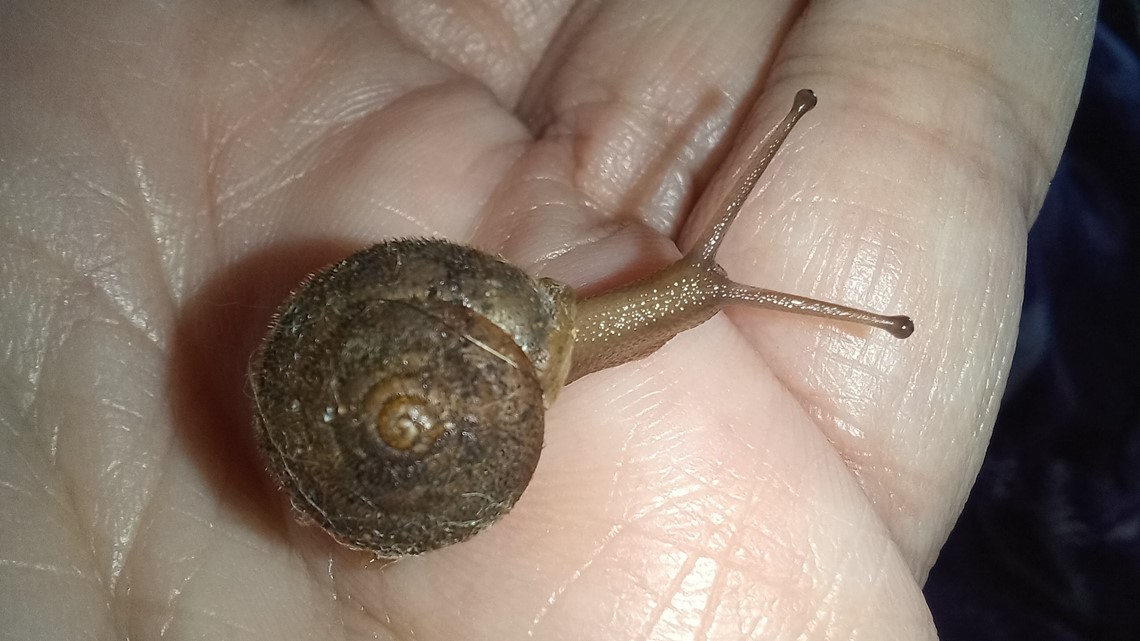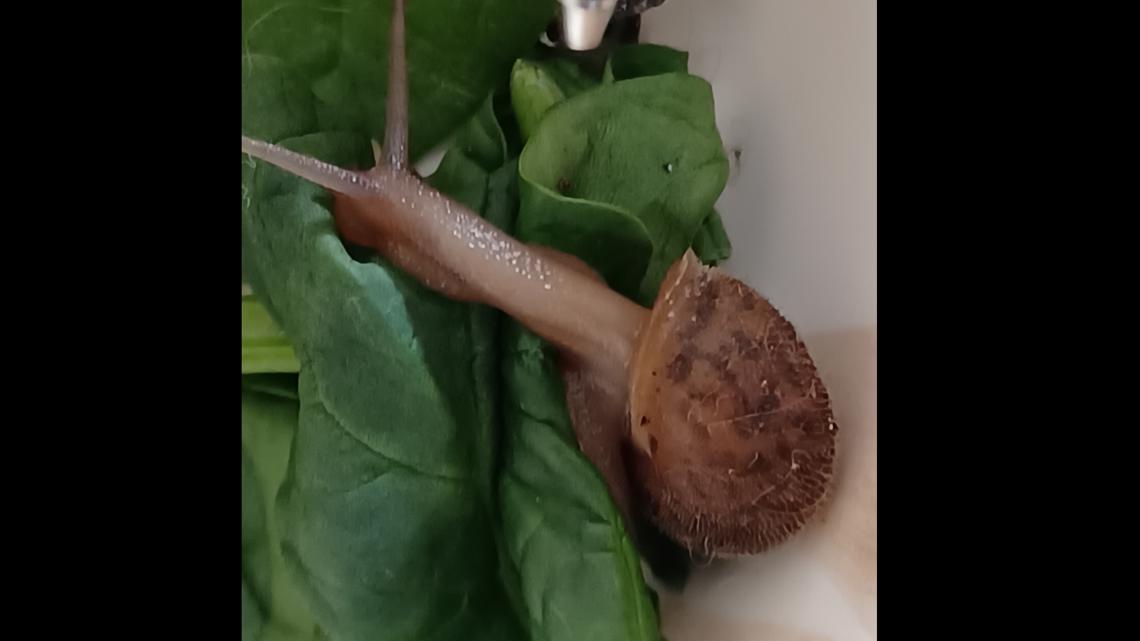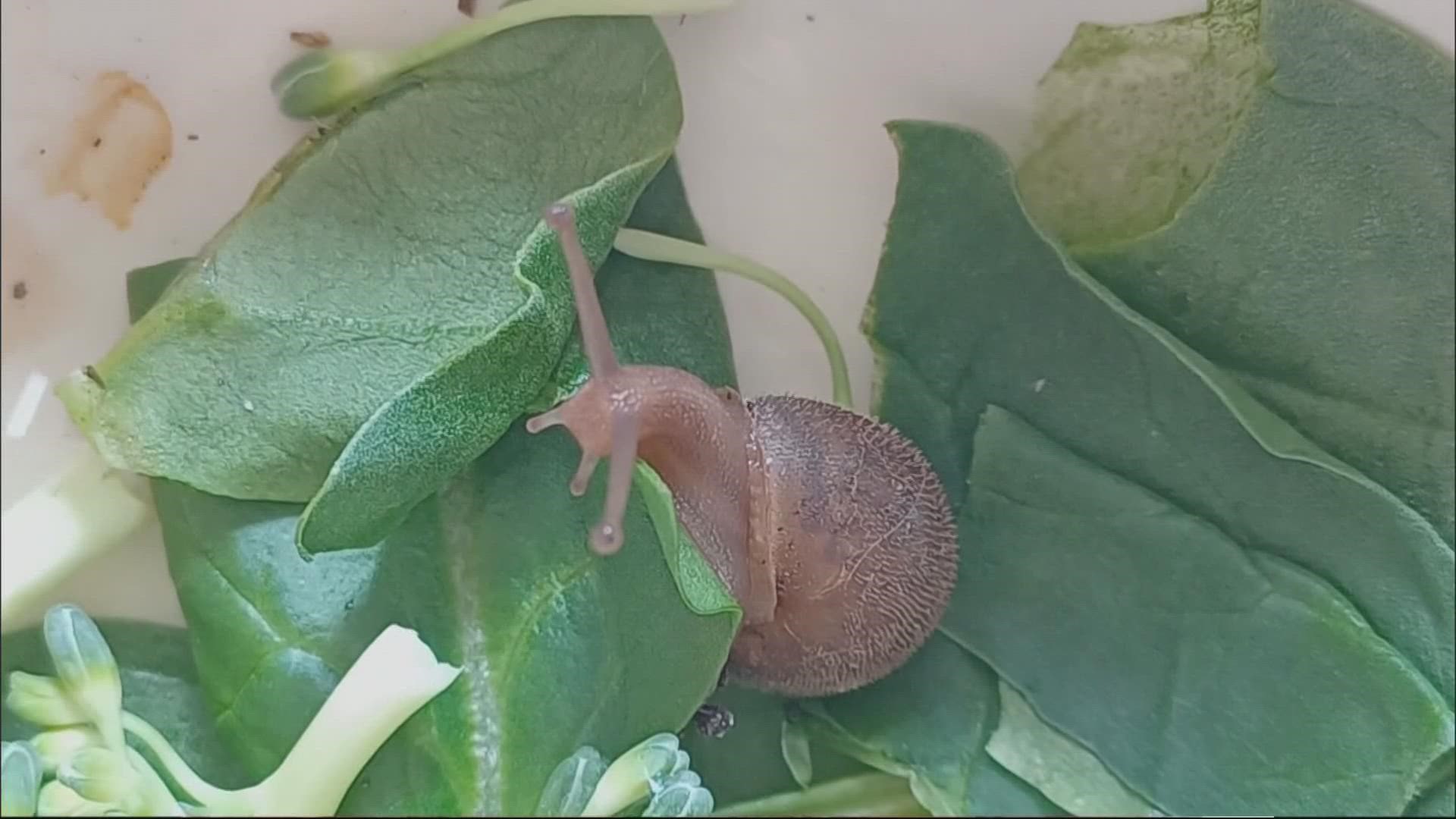SNELLVILLE, Ga. — Darci Rivers-Pankratz is a sensitive species expert with the Bureau of Land Management (BLM) Oregon-Washington. The week of Feb. 28 to March 4 is Invasive Species Week.
"It's not a nationwide species," said Rivers-Pankratz, referring to Vespericola columbianus, or the common snail found in Oregon and Washington. "(It's) one of our local native six snails here in the Northwest. It's one of the common species."
Back in November, a woman named Carolyn Winemiller bought a box of chanterelle mushrooms with a little unintended "extra-cargot."
"I always get them as a treat and when I got home and started cleaning them up, this little snail was in there," Winemiller said. The snail was no larger than a dime. The mushrooms had been refrigerated, so Winemiller said it took a while for the snail to perk up.


RELATED: New Oregon nonprofit takes on invasive species to combat climate change: 'It's not too late'
Granted, a snail in a box packed with mushrooms isn't the rarest of things, but Winemiller lives in Snellville, Georgia, thousands of miles away from the Pacific Northwest.
"He's really tiny for that kind of journey... I had to give him a good name. 'Rover' it was," she said.
Rather than release Rover, she has cared for him in a terrarium for almost four months.
Winemiller's wherewithal can be credited to the fact that she is actually a doctor. She's a veterinarian in Snellville.
"As veterinarians, we are definitely familiar with invasive species and things like that. I would not want to be responsible for releasing the snail equivalent of murder hornets in Georgia," she laughed.
After some research, she reached out to BLM and her inquiry reached Rivers-Pankratz, an expert in mollusks.
"She sent me a huge care package from Oregon which was fantastic and we set him up a very authentic little Oregon terrarium, and he is definitely loving it," said Winemiller.
Rivers-Pankrantrz explained why even a lone snail could cause problems for a new ecosystem, and the importance of Dr. Winemiller's due diligence.


"Snails are really unique. They're hermaphroditic so they can mate and exchange sperm. So they can fertilize the eggs that they have... they have both eggs and sperm, and some snails can hold on to that sperm until a later time," said Rivers-Pankratz, who compared it to enjoying other public lands in our area. "Whether it's national forestland, or a state park, or any lands, you need to make sure that you're not tracking seeds, and clean your boots."
The fact Rover might not need a mate to reproduce crept in Dr. Winemiller's head as well.
"I'm not looking to become the snail empress of Snellville, but I think if there were more, I'd be working on sending them back at that point," she said.
For now, Rover's got a good thing going, with a diet of spinach, broccoli, avocado, and of course, chanterelles. Judging by his appetite, he'll happily live out his days in Snellville — or is it Snailville?

